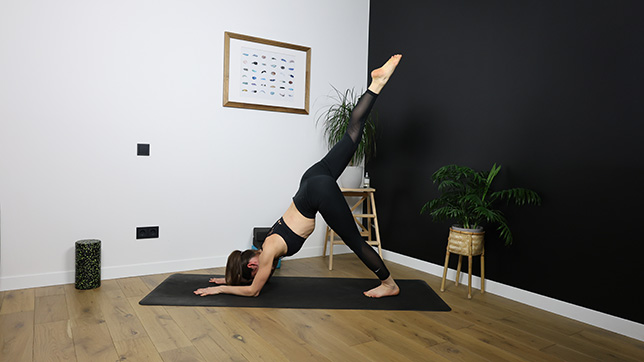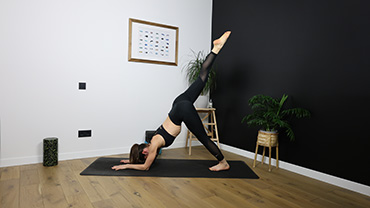One Legged Dolphin Pose - Eka Pada Makarasana

Contents
One Legged Dolphin Pose or Eka Pada Makarasana is a calming yet energizing asana which stretches a number of parts of the body such as the hamstrings and shoulders. Other physical benefits include strengthening of the arms and legs.
As well its physical benefits, it is believed to improve concentration, stamina and balance. Its name comes from the Sanskrit, eka, which means “one,” pada, which means “foot,” makara, which means “crocodile,” and asana, which means “posture” or “seat.”
Pose Detail
- Body Position: Arm & Leg Support, Forward Bend Yoga Poses
- By Type: Balancing Yoga Poses, Chest Opening Yoga Poses, Flexibility Yoga Poses, Shoulder Opening Yoga Poses, Strengthening Yoga Poses
- Difficulty: Intermediate
- By Benefit: Yoga Poses For Neck Pain
Step-by-Step Instructions
Benefits and Contraindications
Improved digestion
Strengthening of the arms and legs
Lowereds blood pressure
Stretches the hamstrings and shoulders
Improving balance and concentration
Glaucoma
Arm, back or shoulder injury or inflammation
High blood pressure
Photo poses in different angles

Modifications, Props and Tips
- Engage your core muscles to keep your hips level and prevent your body from sagging towards the ground.
- Keep your gaze towards your toes or towards the ceiling, depending on what feels comfortable for your neck.
- Use a yoga block or a folded blanket under your forearms if you need more support.
- Take your time with this pose and work gradually towards greater balance and flexibility.
Frequently Asked Questions
Yes, beginners can practice One Legged Dolphin Pose. However, it’s important to start slowly and work gradually towards the full expression of the pose. Modifications and props, such as a yoga block or a folded blanket, can be used to help support the body.
If you feel pain or discomfort in One Legged Dolphin Pose, release the pose immediately and take a break. Check your alignment and make sure that you’re not putting too much strain on any one part of the body. If the discomfort persists, it’s best to consult with a qualified yoga teacher or healthcare professional.
To improve your balance in One Legged Dolphin Pose, try focusing your gaze on a fixed point, engaging your core muscles, and breathing deeply and steadily. You can also practice other balancing poses, such as Tree Pose (Vrksasana) or Warrior III (Virabhadrasana III), to help build stability and control in the body.
It’s best to consult with your healthcare provider before practicing One Legged Dolphin Pose or any other yoga pose during pregnancy. Modifications may be necessary to accommodate the changes in the body during this time.
Variations
- Dolphin Pose
- One-Legged Downward-Facing Dog Pose
- One Legged Dolphin Pose with Twist
- One Legged Dolphin Pose with Knee To Nose
- One Legged Dolphin Pose with Forearm Stand